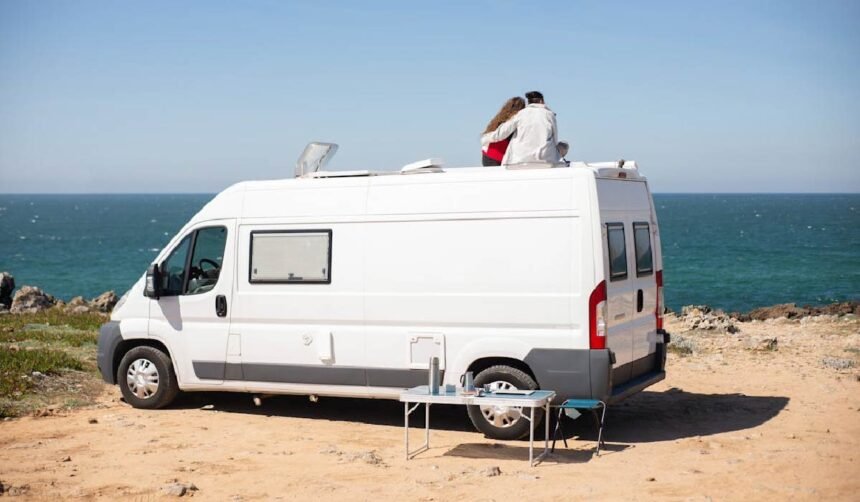When planning group travel in the UK, one of the most common questions is whether a 30-seater coach is the right choice. For groups that are too large for a minibus but not big enough to fill a 50-seater coach, the 30-seater often seems like the perfect middle ground. But is it really worth hiring one? Check this website for more information on hiring one.
Let’s explore the benefits, challenges, and practical considerations to help you decide if a 30-seater coach is the best option for your trip.
-
The Perfect Size for Mid-Sized Groups
A 30-seater coach is often the sweet spot between a 16-seater minibus and a full 50–57 seater.
- Ideal for groups of 20–30 passengers: Sports clubs, wedding guests, school trips, and corporate outings often fall into this size range.
- More cost-effective than two smaller minibuses: Instead of splitting your group, everyone travels together in one vehicle.
- Avoids wasted space of a large coach: If you only have 25–28 passengers, hiring a 50-seater can feel unnecessary and more expensive.
-
Comfort and Amenities
Unlike minibuses, many 30-seater coaches come with features similar to full-size touring coaches:
- Reclining seats and extra legroom.
- Onboard air conditioning and heating.
- Luggage storage space, both overhead and underfloor.
- Optional extras such as USB charging ports, Wi-Fi, or a PA system for group leaders.
For medium-length journeys (1–4 hours), a 30-seater strikes a good balance between comfort and practicality.
-
Easier Access Than Larger Coaches
Large 50–70 seat coaches can struggle with certain UK roads—narrow country lanes, small hotel entrances, or busy city streets. A 30-seater, being shorter and more manoeuvrable, often has an advantage.
- Better for rural venues such as countryside weddings, golf clubs, or activity centres.
- Fewer parking restrictions compared to a full-size coach.
- Quicker loading and unloading thanks to fewer passengers.
This makes them particularly useful for trips that include multiple short stops or tricky locations.
-
Costs: Cheaper, But Not Always
Hiring a 30-seater is usually cheaper than a 50-seater, but not as cheap as many assume. Pricing depends on:
- Mileage and journey time: Longer trips still mean high fuel usage.
- Driver wages: A 30-seater requires the same PCV-licensed driver as a larger coach, so staffing costs are similar.
- Availability: Not every operator has a 30-seater in their fleet. In some regions, supply is limited, so you may pay a premium compared to the more common 16-seaters or 50-seaters.
That said, if your group size fits neatly into 30 seats, the cost per passenger can work out very reasonable.
-
When a 30-Seater Makes the Most Sense
A 30-seater coach is worth it if:
- You have 20–30 passengers travelling together.
- You want to avoid the hassle of coordinating multiple vehicles.
- Your destination has restricted access for larger coaches.
- You value a balance between comfort and affordability.
- When
It May Not Be the Best Choice
However, a 30-seater may not always be the most practical:
- Groups under 18 passengers: A minibus is often cheaper and easier to arrange.
- Groups above 32 passengers: You’ll need to upgrade to a 50-seater or book multiple vehicles.
- High-demand seasons: Limited availability means you might be forced into a larger coach anyway, especially during peak summer, school trips, or December holidays.
-
Booking Tips
If you decide a 30-seater is right for your trip:
- Book early: These vehicles are rarer than 50-seaters, and operators often have only one or two in their fleet.
- Confirm amenities: Some 30-seaters are luxury mini-coaches, others are basic. Ask about air con, luggage space, and accessibility before booking.
- Get multiple quotes: Prices can vary widely between operators.
- Be realistic with group size: Always plan for a couple of extra seats in case of late additions.
Conclusion
So, is it worth hiring a 30-seater coach in the UK? For mid-sized groups, the answer is often yes. They’re more economical than larger coaches, more comfortable and practical than minibuses, and perfectly suited to groups in the 20–30 passenger range.
However, limited availability and relatively high operating costs mean you should weigh up alternatives. If your group is smaller, a minibus may be smarter. If it’s larger, stepping up to a 50-seater could be more cost-effective.







